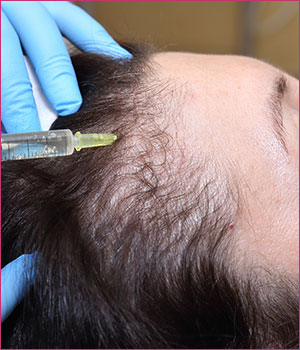ANDROGENIC ALLOPECIA PROTOCOLS

A really nice “middle ground” alternative to hair restoration is an injection of PRP into the scalp. When it comes to hair restoration, there are well-studied and effective medical treatments with finasteride (Propecia) and minoxidil (Rogaine) and well-studied and effective surgical treatments to include, but not limited to Follicular hair unit transplantation. PRP injected into the scalp nicely bridges the medical and surgical applications! PRP injected into the scalp as a stand-alone treatment in androgenic alopecia (male pattern baldness) has been shown to not only increase the hair follicle thickness but also demonstrates an increase in the actual number of hair follicles. Medical therapies like finasteride and minoxidil are encouraged in combination with PRP for enhanced results. Furthermore, hair transplantation surgery has enjoyed an increase in hair transplant survivability and better overall results when PRP is applied and or injected at the time of transplantation.
If your practice has not embraced the hair restoration niche yet, simply injecting PRP into the scalp is a nice way to enter this fast-growing and exciting area of medicine. I find that injection into the subcutaneous/deep dermal plane is best for this is where the hair follicles are located. I feel that injection deeper into the subgaleal plane are less effective. The technique does require several injections, an area of about 1 cm squared using a 27 gauge needle. Again, this works best in androgenic alopecia and has had better results in those with Norwood classifications 2-5. I do council patients that results can vary. I also inject women as well as men, but for women I screen more for other causes of alopecia like thyroid disease (TSH), iron deficiency anemia (CBC, serum iron, and ferritin), basic endocrine panel (free testosterone, prolactin, 17-hydroxy progesterone, cortisol) and occasionally labs to rule out possible autoimmune contributions (antinuclear antibody, SED rate

